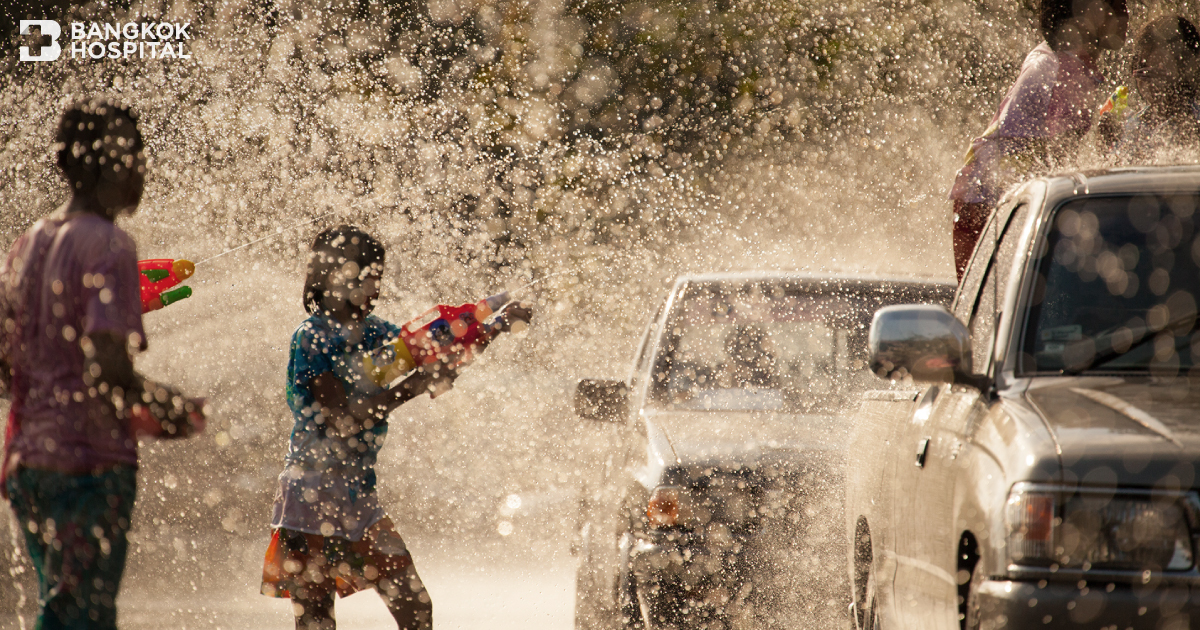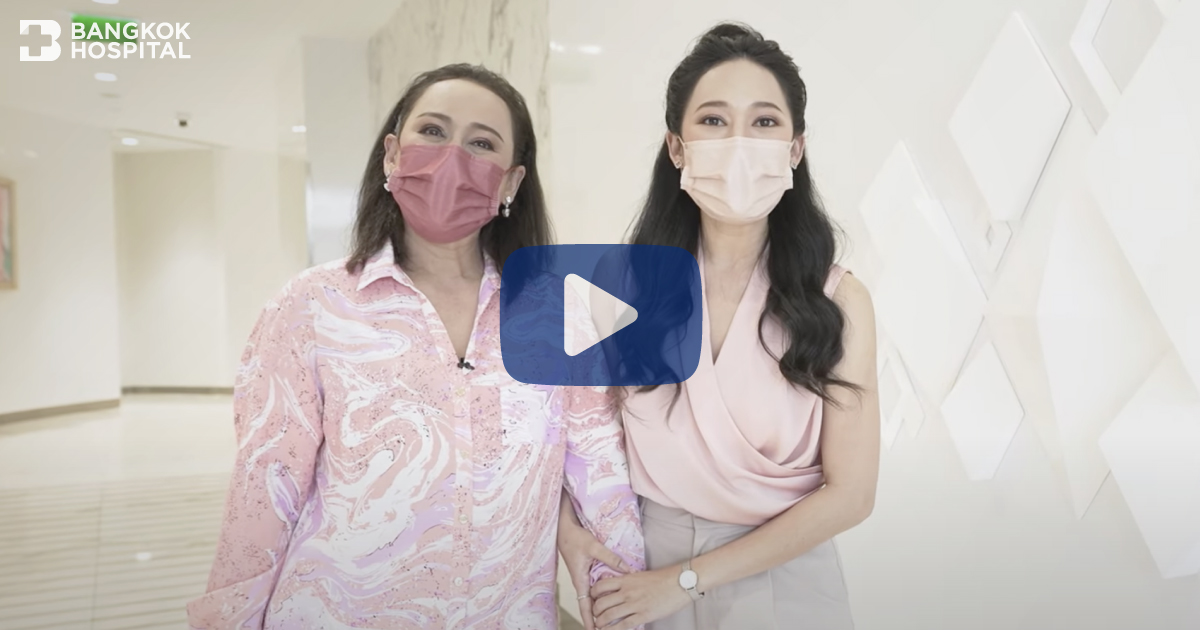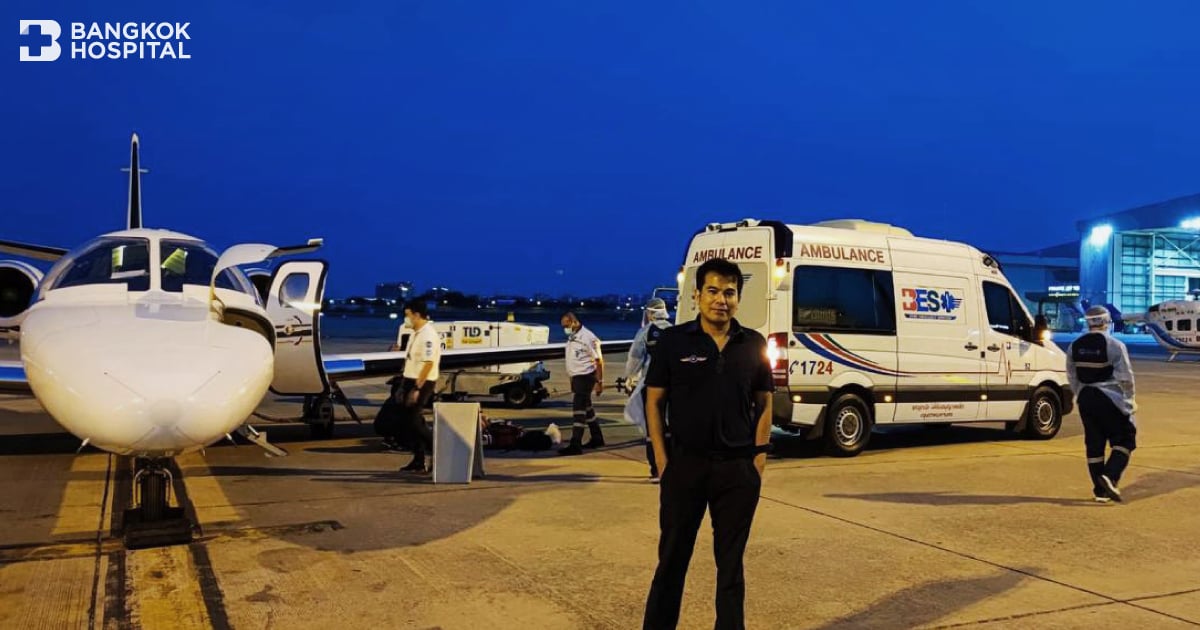“The 7 Dangerous Days during Songkran Festival” “Trauma Day” no one wishes for an “accident” that leads to injuries, loss of life, or disabilities.
Injuries found at the scene may have internal injuries that we can’t see. Moving the injured from the scene to the hospital must be done carefully to prevent further injury while lifting, pulling, carrying, and moving the injured, especially in cases of fractures and dislocations. Improper aid and relocation can cause bones to shift and press against nearby important organs, such as nerves, spinal cord, and blood vessels.
If an injured person is found, call 1669 or the hotline 1724 BDMS Medevac Center is ready to assist in reporting the incident and providing assistance according to their recommendations. Injured persons who are severe or unable to move should wait for a well-trained team with appropriate equipment to help next.
“Each passing minute for those injured is the time between life and death. The only crucial thing that can decrease the chance of loss during such a crisis is timely and proper care.”
An example of patient care system BDMS Medevac Center prioritizes prehospital care, which is an emergency patient care system at the scene and during transport to the hospital, offering effective care from first aid at the scene, rapid patient transport for ongoing treatment, including accident and rehabilitation physicians for physical and mental recovery, and promoting patients to return to their lives. The entire medical team, nurses, and specialists are trained both theoretically and practically to make immediate and appropriate treatment decisions.
Stepwise Injury Care
Every step of care follows universal standards accepted by the Joint Commission International (JCI) to increase the survival chances of patients or injured individuals. During these 7 dangerous days, the trauma center prepares the readiness of emergency doctors, nurses, and support services such as emergency departments, operating rooms, blood banks, and ICUs, including 24-hour emergency ambulance teams, with accident surgeons and specialists providing care for injuries.
Priority steps in providing aid and care for injuries include “Quickly address emergencies that could lead to death to increase survival chances”“ and “Prevent further injury from patient transport to reduce disabilities.”
Every injured individual must be examined in every body part to detect injuries and potential complications with the following steps:
- Identifying life-threatening conditions such as severe bleeding, difficulty breathing, oxygen deprivation. Once identified, immediate correction is necessary.
- Complete physical examination to explore both external and internal body injuries. This step is performed when the patient is stable from life-threatening conditions.
- Upon identifying significant injuries, a multidisciplinary team of experts must collaborate from the beginning to minimize waiting and repeated examinations, allowing for immediate surgery or specialized care for injuries, especially significant body system injuries such as the brain, nervous system, heart, major vessels, lungs, respiratory system, bones, and joints.
“Incorrect or delayed treatment could lead to complications, disabilities, or death. Another critical step is the joint treatment planning by the trauma and specialized surgeons in various fields such as neurosurgery, orthopedic surgery, plastic surgery, facial and cranial surgery, anesthesiology, and the critical care medicine team providing ongoing care for severe patients. The entire medical team must collaborate to plan suitable treatment based on the patient’s condition and physical state.”
Preventing Injuries
- The driver’s physical readiness
– Have sufficient rest
– Do not stay up all night
– Do not drive continuously for many hours, take a break every 4 hours max
– “Do not drive when drowsy.” Take a rest when drowsy or have someone else drive. Even a momentary nap at high speed can lead to accidents.
– “Do not drink and drive.” The campaign warns that “do not drive when drunk” is challenging because most will insist they are “not drunk” after drinking.
- Vehicle readiness
– The brake system must be ready to use
– Drive at a suitable speed
– Slowing down reduces the severity of accidents
– Follow traffic laws, especially stopping before crossing intersections and not running red lights
- Always protect yourself
– Motorcycle riders and passengers must wear helmets
– Drivers or passengers in cars and buses must wear seat belts
- Always prioritize safety
Always be mentally prepared that “if traveling far, let’s go slowly together” Give way, not in a rush “Even for short distances, we won’t be negligent.” Others might make mistakes and cause accidents, we have to protect ourselves.
- Study the route to know the risky points
– Study the route to know the risky areas, such as sharp curves, steep curves, narrow roads, damaged roads
– Plan your trip and rest well
– Avoid situations of “tired, drowsy, hungry, irritated, improper timing.”
Emergency hotline numbers to know Hotline 1669 is available 24 hours supported by the National Institute for Emergency Medicine along with hospital and service units from both public and private sectors offering emergency patient and injury transfer services and Hotline 1724 BDMS Medevac Center
“Safety first.” Bangkok Hospital does not want you and your loved ones to be part of the statistics this year and in the years to come.







